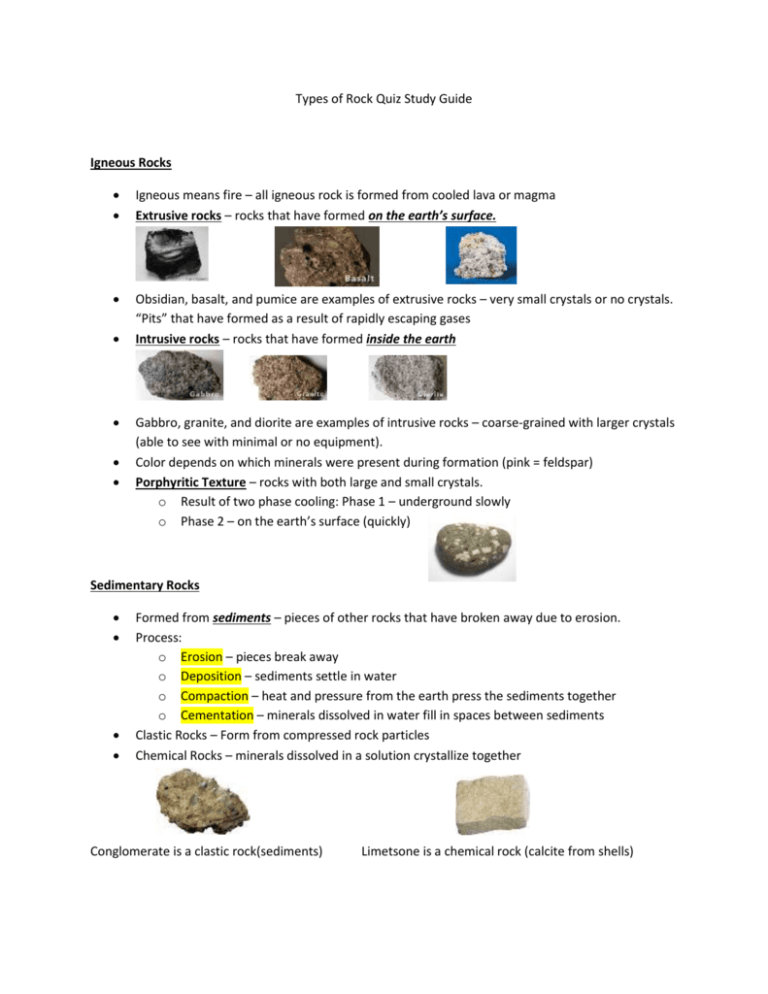Types of Rock Quiz Study Guide Igneous Rocks Igneous means fire
advertisement

Types of Rock Quiz Study Guide Igneous Rocks Igneous means fire – all igneous rock is formed from cooled lava or magma Extrusive rocks – rocks that have formed on the earth’s surface. Obsidian, basalt, and pumice are examples of extrusive rocks – very small crystals or no crystals. “Pits” that have formed as a result of rapidly escaping gases Intrusive rocks – rocks that have formed inside the earth Gabbro, granite, and diorite are examples of intrusive rocks – coarse-grained with larger crystals (able to see with minimal or no equipment). Color depends on which minerals were present during formation (pink = feldspar) Porphyritic Texture – rocks with both large and small crystals. o Result of two phase cooling: Phase 1 – underground slowly o Phase 2 – on the earth’s surface (quickly) Sedimentary Rocks Formed from sediments – pieces of other rocks that have broken away due to erosion. Process: o Erosion – pieces break away o Deposition – sediments settle in water o Compaction – heat and pressure from the earth press the sediments together o Cementation – minerals dissolved in water fill in spaces between sediments Clastic Rocks – Form from compressed rock particles Chemical Rocks – minerals dissolved in a solution crystallize together Conglomerate is a clastic rock(sediments) Limetsone is a chemical rock (calcite from shells) Metamorphic Rock “meta” is to change and “morph” is form– metamorphic rock is rock formed from other rocks due to intense heat and pressure from inside the earth Metamorphic rocks are categorized as: o Foliated – grains run in bands that they can split along (like cleavage) o Non-foliated – grains do not show bands, harder, and do not split Gneiss (nice) is foliated Quartzite is non-foliated Notice that gneiss has strips or bands, while quartzite has no pattern.








